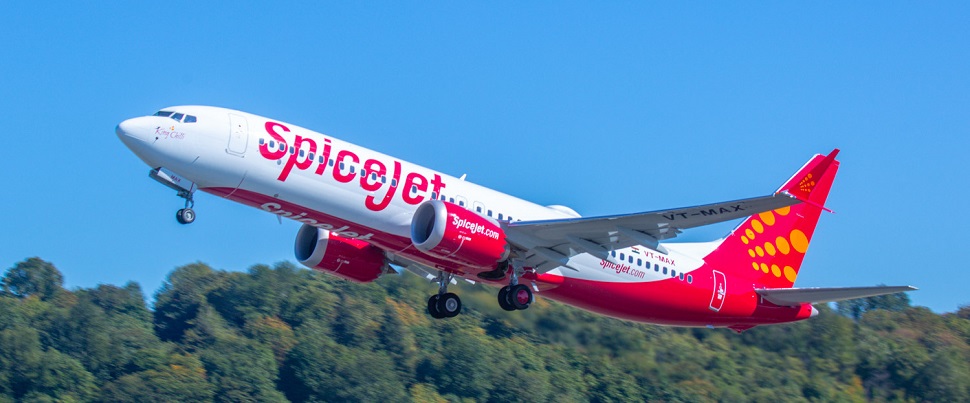Ras Al Khaimah Airport is celebrating Indian low-cost carrier SpiceJet’s decision to make it a hub and is confident it has “overcome the challenges” of losing home carrier RAK Airways, which collapsed in early 2014.
Ras Al Khaimah Airport is celebrating Indian low-cost carrier SpiceJet’s decision to make it a hub and is confident it has “overcome the challenges” of losing home carrier RAK Airways, which collapsed in early 2014.
The emirate is on a mission to increase tourist numbers, and its airport is marketing itself as a “less busy alternative” to nearby hubs in Dubai and Abu Dhabi, Ras Al Khaimah Airport chief executive Sanjay Khanna tells FlightGlobal.
SpiceJet announced last month that it would build its first international hub at the airport, beginning with flights to New Delhi in December, and eventually using it to extend its network to Western Europe.

Khanna says the airline will base five aircraft at Ras Al Khaimah and apply for an air operator’s certificate to become “a local carrier”, before connecting the emirate with Europe. The airline also plans to base freighter aircraft at its new hub.
“SpiceJet was very keen to mention that Ras Al Khaimah is a place where people from India would like to come at the weekend and relax with their families because it’s so close,” he says.
The partnership with SpiceJet “will help us achieve our goals”, says Khanna, adding that the airport is also “in talks with other airlines” and hopes to make another announcement “very soon”.
Khanna describes Ras Al Khaimah as a “hidden treasure” of the United Arab Emirates, which has “not only proven itself as a tourist destination but also [as a base] for businesses”. Unlike neighbouring Dubai and Abu Dhabi, the emirate is “not an oil- or gas-based economy” and instead relies on services. It has been “putting all the pieces in place” to attract more businesses and tourists, and “turning around the airport to provide the required connectivity” is part of the plan.
“Tourism is one of the fastest-growing sectors in Ras Al Khaimah,” says Khanna. More than one million tourists visited the emirate last year and there is “a modest target to reach 1.5 to two million in some time”.
The airport’s drive to boost air services to the emirate suffered a setback in late 2013 when its home carrier, RAK Airways, announced that it would cease operations in early 2014. The airline had been operating Airbus A320 services to destinations including Doha, Peshawar, Islamabad, Lahore, Jeddah and Riyadh, but it folded citing pressures associated with market conditions, rising operating costs and regional instability.
RAK Airways had struggled to develop as a carrier, with little apparent consistency in its business plan and frequent changes to its senior management. It stopped operating in its original form in 2009, just two years after emerging as a new airline for the emirate. It then resurrected itself as a low-cost carrier in 2010.
Khanna says the loss of RAK Airways meant the airport “lost all connectivity and had to start afresh”.
“Losing RAK Airways definitely left Ras Al Khaimah with no hub carrier,” he says. “To keep afloat we started to focus on low-cost carriers, then charter, then cargo. We worked hard to provide good packages to attract airlines.”
Ras Al Khaimah guaranteed airlines that it would match the pricing of any airport in the UAE and would set up a comprehensive supply chain of services, such as ground handling and fuel supply.
In early 2014 the emirate’s civil aviation department agreed a strategic partnership with Sharjah-based low-cost carrier Air Arabia, granting designated-carrier status to the airline to enable it to connect Ras Al Khaimah with several regional destinations.
Air Arabia chief executive Adel Ali said at the time that the tourism sector in Ras Al Khaimah was “witnessing a strong and steady growth” and he was “optimistic” this would continue “in the years to come”.
Air Arabia has one aircraft based at the airport but will add “four or five” more “over a period of time”, says Khanna.
Cirium schedules data shows there are currently eight destinations served on a scheduled basis from Ras Al Khaimah, most of which are operated by Air Arabia.
Khanna says that bringing in Air Arabia “brought a lot of strength” to the airport’s recovery efforts. The airline’s plan to increase the number of aircraft based at Ras Al Khaimah, together with the SpiceJet announcement and ongoing talks with other carriers, has given the airport hope.
“I personally believe we have overcome all the challenges and established ourselves again,” says Khanna. “I look forward to seeing our airport scale new heights.”
However, he is under no illusion that Ras Al Khaimah will follow in the footsteps of Dubai – which is located just a 45-minute drive away and has become a major global hub – or Abu Dhabi, one of the world’s fastest-growing hubs.
“To see sustainable and progressive growth is all we’re aiming at. We’re not competing [with Dubai and Abu Dhabi] but we’re addressing our own needs. We want to be the airport of choice for those residing in the emirate. We market ourselves as a less busy alternative,” says Khanna, adding that Ras Al Khaimah “complements” its much bigger airport neighbours.
The airport’s chairman, Sheikh Salem bin Sultan Al Qasimi described Dubai in 2012 as “the centre of gravity in the UAE”, but said it was “crowded” and Ras Al Khaimah could “complement [Dubai’s] growth by offering airlines an alternative”.
The airport is now hoping that the recent deal with SpiceJet is a sign that some of Dubai’s gravitational pull is starting to shift towards Ras Al Khaimah.
